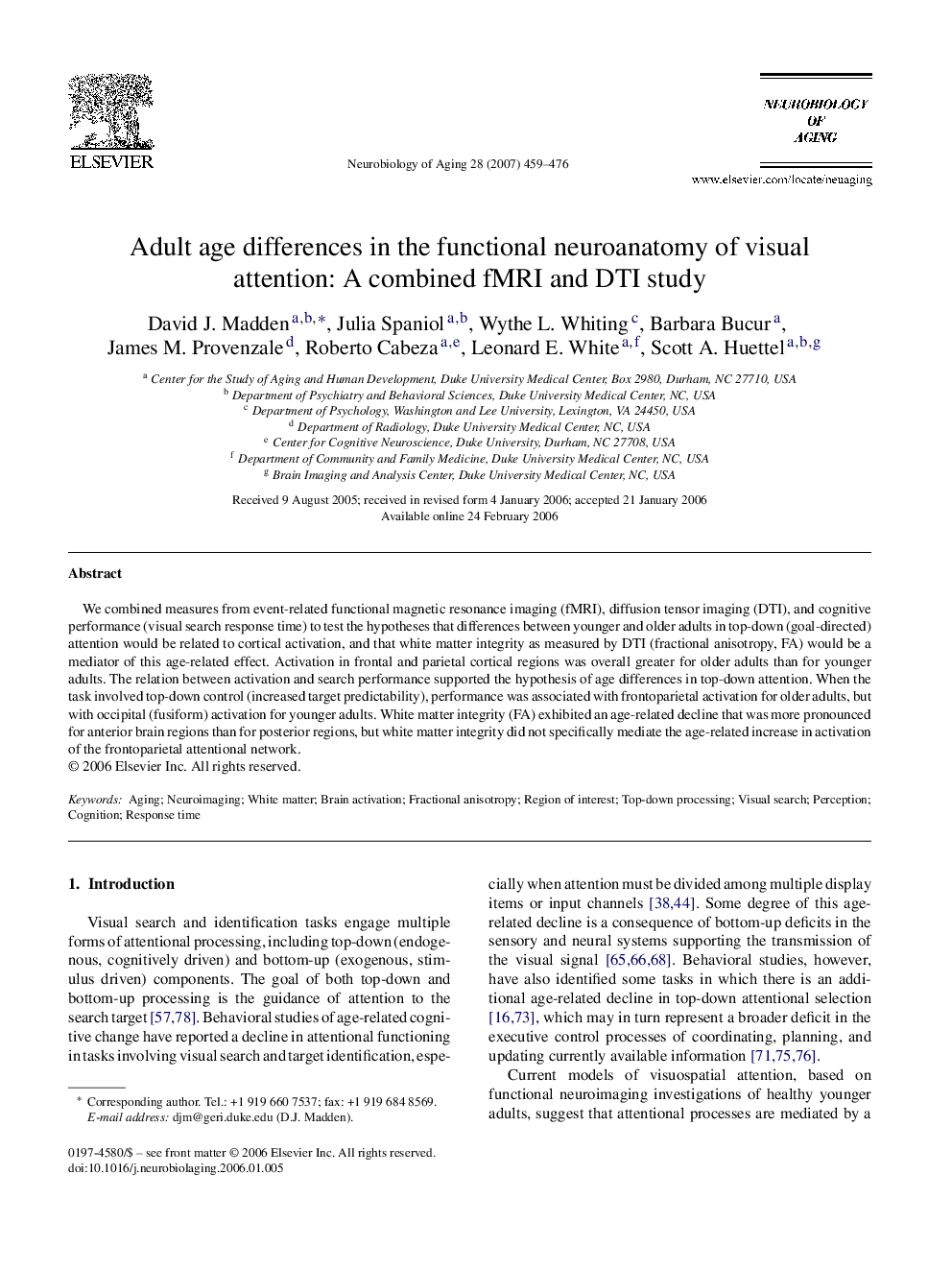| Article ID | Journal | Published Year | Pages | File Type |
|---|---|---|---|---|
| 331300 | Neurobiology of Aging | 2007 | 18 Pages |
We combined measures from event-related functional magnetic resonance imaging (fMRI), diffusion tensor imaging (DTI), and cognitive performance (visual search response time) to test the hypotheses that differences between younger and older adults in top-down (goal-directed) attention would be related to cortical activation, and that white matter integrity as measured by DTI (fractional anisotropy, FA) would be a mediator of this age-related effect. Activation in frontal and parietal cortical regions was overall greater for older adults than for younger adults. The relation between activation and search performance supported the hypothesis of age differences in top-down attention. When the task involved top-down control (increased target predictability), performance was associated with frontoparietal activation for older adults, but with occipital (fusiform) activation for younger adults. White matter integrity (FA) exhibited an age-related decline that was more pronounced for anterior brain regions than for posterior regions, but white matter integrity did not specifically mediate the age-related increase in activation of the frontoparietal attentional network.
